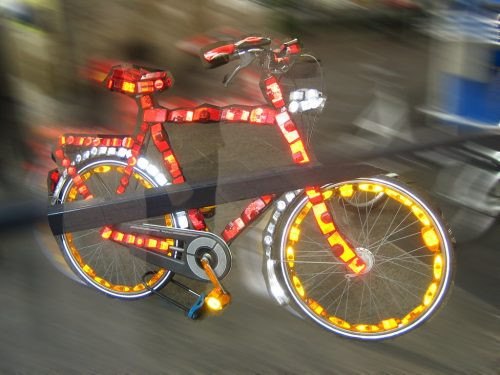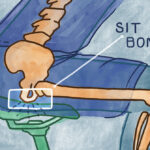Cycling offers numerous benefits, from fitness and recreation to eco-friendly commuting. However, sharing the road with vehicles, especially during periods of low light, presents significant safety challenges. As daylight hours shorten, particularly during winter months, the importance of visibility for cyclists cannot be overstated. This is where Bike Safety Reflectors play a crucial role. This guide delves into the world of bike safety reflectors, exploring their importance, types, and how they can significantly enhance your visibility and safety on the road.
The Critical Need for Bike Visibility
Studies and statistics consistently highlight the increased risks cyclists face in low-light conditions. A significant portion of bicycle accidents occur during dawn, dusk, or nighttime, underscoring the need for effective visibility solutions. National Highway Traffic Safety Administration (NHTSA) data reveals that over half of all bicycle fatalities happen during these reduced visibility hours.
This risk is further compounded by factors such as driver distraction, impaired visibility due to weather conditions, and the inherent difficulty drivers have in spotting cyclists, especially from the side. While laws mandate bicycle lights in many regions, and these are undoubtedly vital, reflectors offer an additional layer of safety by providing constant, passive visibility, even when lights might fail or batteries run out.
 Evening Bike Rider
Evening Bike Rider
Reflectors work by bouncing light from external sources, such as car headlights, back to the source, making the cyclist visible to drivers. This principle of retroreflectivity is fundamental to their effectiveness and is used in various safety applications, from road signs to emergency services vehicles.
Beyond the Basics: Types of Bike Safety Reflectors
While most bikes come equipped with basic reflectors as mandated by safety standards, understanding the different types available and their specific benefits can significantly improve your safety profile.
Factory-Standard Reflectors: A Starting Point
Typically, new bicycles are fitted with spoke reflectors, pedal reflectors, and front and rear reflectors. These are often basic “cube corner” reflectors, which have been a standard for decades. While they meet minimum legal requirements, their reflectivity and visibility angles can be limited.
Many cyclists, particularly experienced riders, often remove these factory reflectors, citing aesthetic reasons or perceived bulkiness. However, dismissing reflectors entirely is a safety compromise.
Upgrading Your Reflectivity: Enhanced Reflector Options
Fortunately, advancements in materials and technology have led to more effective and aesthetically integrated reflector options:
-
Rim Reflectors: These reflectors, often utilizing reflective tape applied to the wheel rims, offer a large, highly visible reflective surface. They are particularly effective in side visibility, a crucial aspect of cyclist safety. Rim reflectors are designed for bikes with disc brakes, as they require a clean rim surface for adhesion.
-
Spoke Reflectors (Advanced): Moving beyond basic plastic reflectors, newer spoke reflectors utilize advanced retroreflective materials and aerodynamic designs. These are lighter, less prone to causing wheel imbalance, and significantly more reflective than traditional options. Some innovative designs even clip onto spokes for easy installation and removal.
-
Pedal Reflectors (Integrated): Modern pedal designs can incorporate reflectors seamlessly into the pedal body, maintaining aesthetics while enhancing visibility from the front and rear as the pedals rotate.
-
Reflective Tires and Sidewalls: Some bicycle tires are manufactured with reflective sidewalls. This integrated approach provides a continuous band of reflectivity around the wheel circumference, increasing visibility without adding separate components.
-
Reflective Tape and Stickers: For customization and targeted reflectivity, reflective tapes and stickers can be applied to various parts of the bike, helmet, and even clothing. These are versatile and allow cyclists to enhance visibility in specific areas.
 Reflector Options
Reflector Options
Conspicuity and Style: Balancing Safety with Aesthetics
One of the challenges in promoting bike safety reflectors is the perception among some cyclists that they are unfashionable or detract from the “look” of the bike. This is understandable, as cyclists often take pride in their bikes’ appearance and performance. However, safety should never be compromised for style.
The concept of conspicuity, or how easily noticeable something is, should be prioritized. Modern reflector designs are increasingly focusing on blending safety with aesthetics. Manufacturers are developing reflectors that are:
- Low-profile and Aerodynamic: Minimizing bulk and wind resistance.
- Color-integrated: Available in colors that complement bike frames and components.
- Discreet: Designed to be less visually intrusive in daylight but highly reflective at night.
Companies like Reflaero are specifically addressing this challenge by creating reflectors that are not only highly effective but also aesthetically considered. Their products utilize advanced materials and designs to offer superior reflectivity without compromising the look of the bike.
The Science of Being Seen: Retroreflectivity and Fluorescence
Understanding the technology behind modern reflectors highlights their effectiveness. Two key concepts are crucial:
-
Retroreflectivity: Traditional reflectors use “cube corner” technology, which reflects light back towards the source. However, standard cube corner reflectors have a narrower angle of reflection. Advanced retroreflective materials, like those developed by companies like 3M and used by Reflaero, offer a much wider angle of reflection. This means they are visible to drivers even when approached from angles other than directly head-on.
-
Fluorescence: Fluorescent materials go a step further. They absorb invisible light spectrums, such as UV light, and convert them into visible light. This “light conversion” makes fluorescent colors appear exceptionally bright, even in low-light conditions, and enhances daytime visibility as well. The vivid “yellow-green” color commonly used in high-visibility safety gear is a fluorescent color.
Combining retroreflectivity with fluorescence creates reflectors that are significantly more effective than basic reflectors, maximizing visibility in a range of lighting conditions, both day and night.
 Dutch Reflective Bike
Dutch Reflective Bike
Beyond Reflectors: A Holistic Approach to Bike Safety
While bike safety reflectors are a vital component of cyclist visibility, they are most effective when part of a broader safety strategy. This includes:
-
High-Quality Bike Lights: Front and rear lights are essential for nighttime riding and are legally required in many areas. Choose bright, reliable lights with good battery life or rechargeable options.
-
Reflective Clothing and Gear: Wearing reflective jackets, vests, armbands, and leg straps significantly increases your visibility as a cyclist.
-
Helmet Reflectors: Many helmets come with built-in reflective elements, or reflective stickers can be added.
-
Proper Bike Maintenance: Ensure your bike is in good working order, including brakes, tires, and lights.
-
Defensive Riding Techniques: Be aware of your surroundings, anticipate driver behavior, and ride predictably.
-
Advocacy for Safer Infrastructure: Support initiatives for bike lanes, improved street lighting, and safer road designs that separate cyclists from vehicle traffic.
Conclusion: Prioritizing Visibility for a Safer Ride
Bike safety reflectors are not just mandated equipment; they are a crucial safety component for any cyclist, especially those who ride in low-light conditions or share roads with vehicles. By understanding the types of reflectors available, embracing advancements in retroreflective and fluorescent technology, and integrating reflectors into a comprehensive safety strategy, cyclists can significantly enhance their visibility and reduce their risk of accidents.
While personal style preferences are valid, prioritizing safety through enhanced visibility is a responsible choice for every cyclist. Embracing modern, effective bike safety reflectors is a smart investment in your well-being and ensures a safer, more confident ride, no matter the time of day or lighting conditions.

